A sewing Renaissance: Swanson's Fabrics in Turners Falls eyes mending community
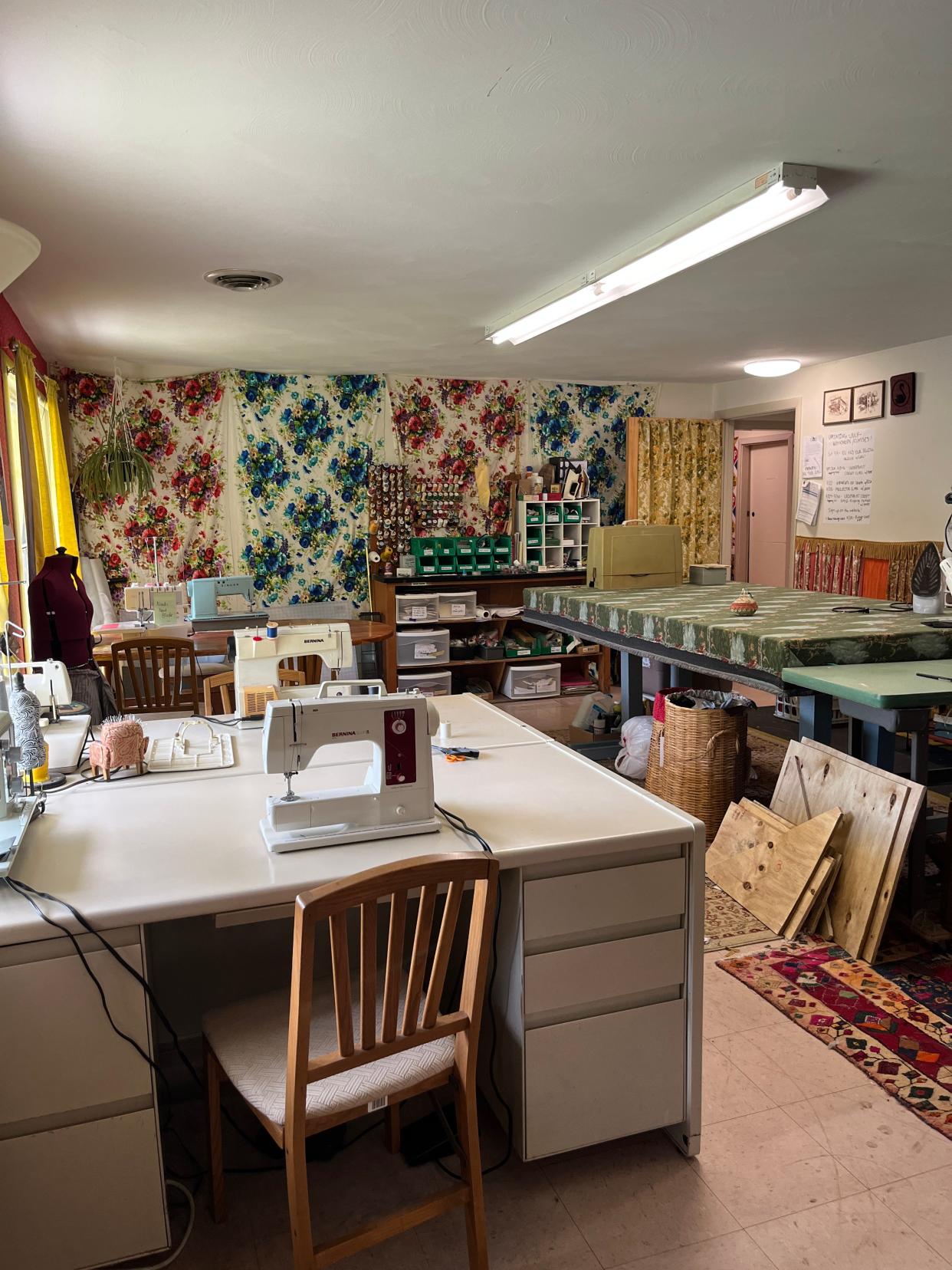
The village of Turners Falls, a former paper and cutlery mill town located on a picturesque stretch of the Connecticut River in Massachusetts, is home to a new and thriving fabric thrift store. Opening in August 2020, Swanson’s Fabrics has become both a purveyor of unused secondhand fabrics and a community learning center focused on teaching sewing skills to a new generation.
“We see our role as the conduit between generations,” said fiber artist Kathryn Greenwood Swanson, who established this easygoing space where novice sewers can encounter their sewing elders. The opportunity for such a novel enterprise arose with the pandemic, which encouraged even non-sewers to attempt mask making.
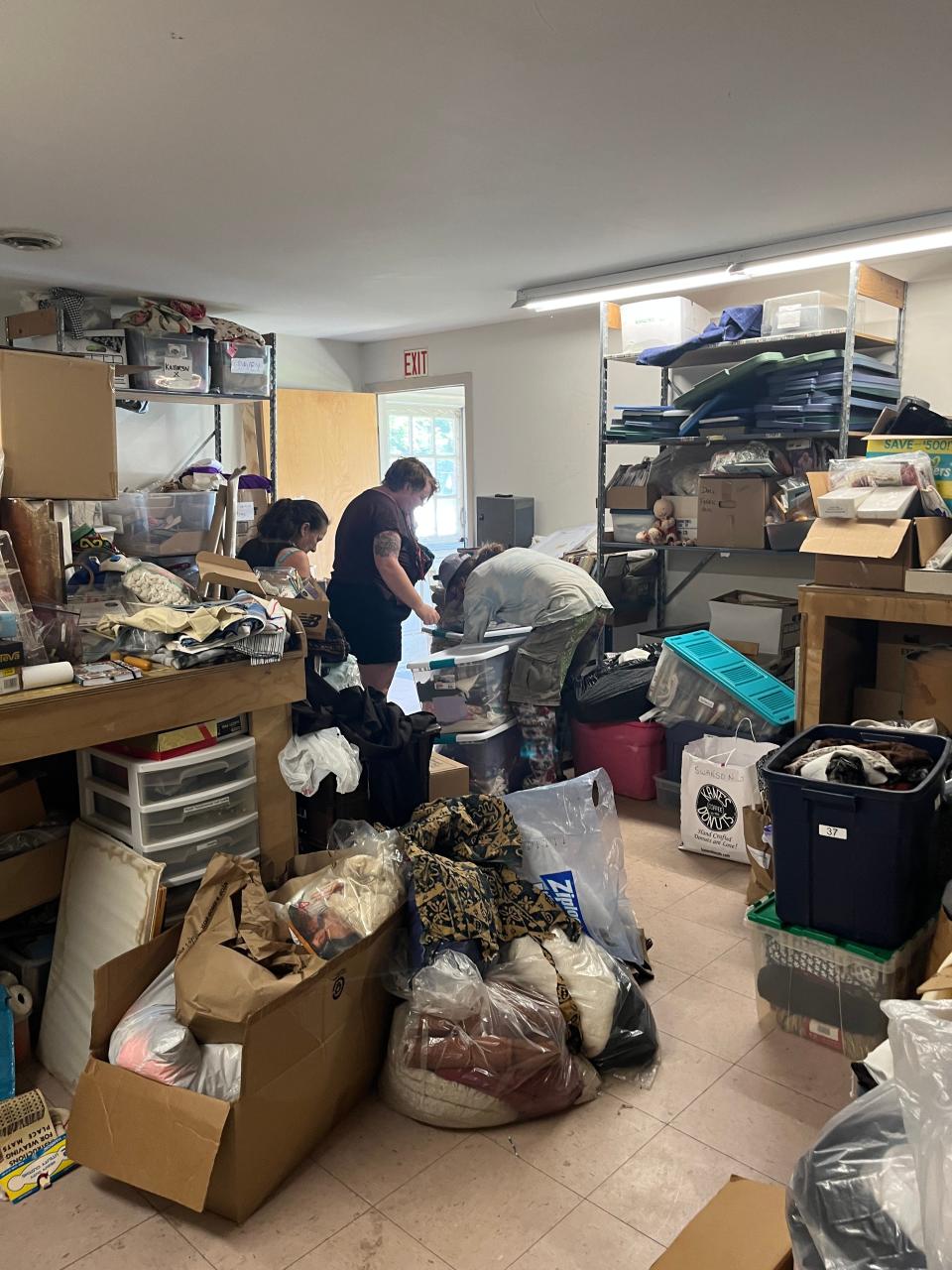
When Swanson, then a first-grade teacher who anticipated a new job teaching sewing to children, heard of its cancelation, she took a new career turn. As a seasoned fiber artist exploring ways to add value to waste fabrics, or upcycling, she had hit upon weaving braided rugs, not from conventional wool but from old polyester bedsheets. This new purpose would keep the synthetic sheets out of landfills while giving them a new life. This marriage between environmentalism and innovation in the realm of textiles served as a driving force for the fledgling business.
With her stimulus check and a search on Facebook Marketplace for fabric stashes, Swanson found a retired Broadway costume designer in New Jersey willing to donate a huge quantity of fabrics, and she drove the distance to pick them up. With this foundational stash, Swanson launched her donation-based thrift store that not only allowed sewing with quality fabrics to become affordable for anyone but also offered a safe haven where sewers who had amassed fabrics over a lifetime finally felt comfortable unloading them.
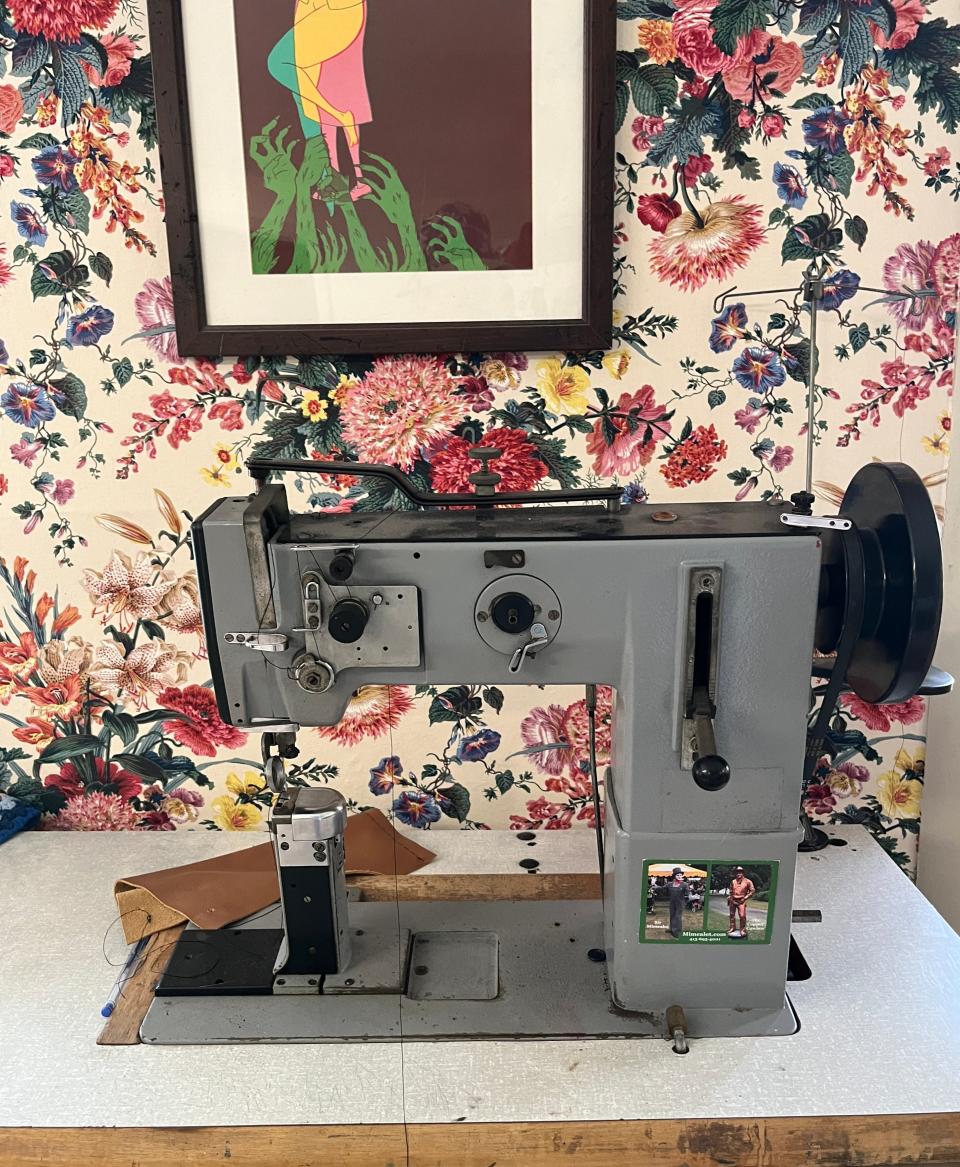
'A steward and guardian of the fabric'
Getting the fabrics to the right person — the one who will learn and work with them — is then central to Swanson’s view of her role. “I think of myself more as a steward and guardian of the fabric and my job is to find the right home for them. It really feels like an animal shelter that way, everything about it parallels.”
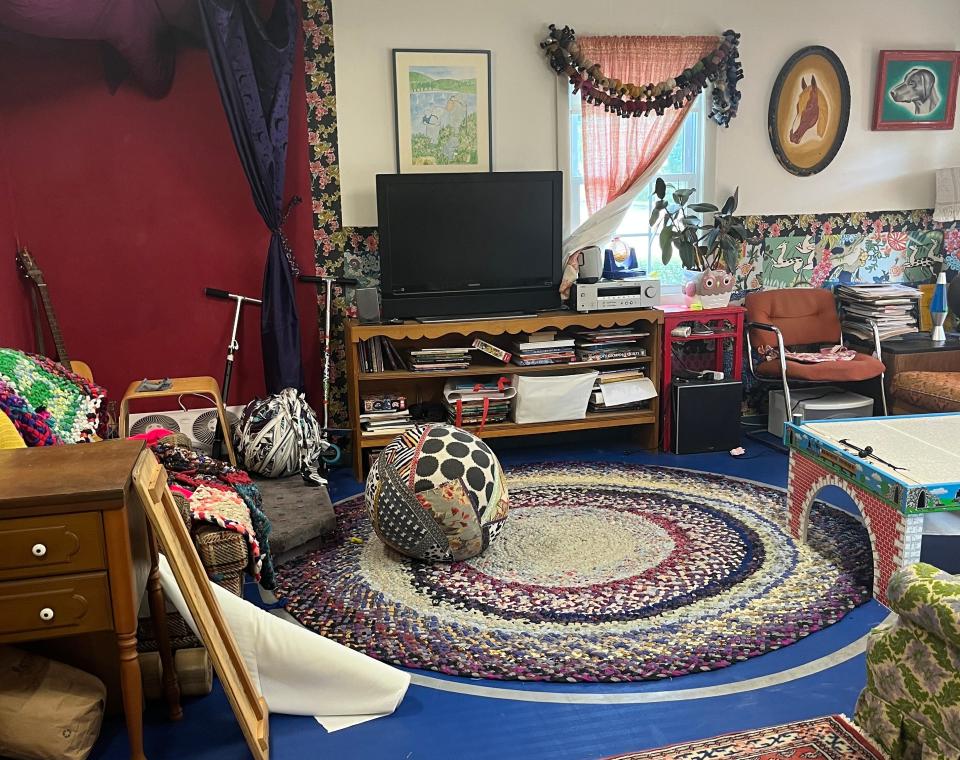
Swanson’s Fabrics sells secondhand but unused items only, including all kinds of sewing accessories — buttons, zippers, snaps, thread, dress patterns – and even vintage sewing machines. “We don’t say no to anything, but we do ask people not to bring us things that smell bad.” All fabrics as Swanson’s, no matter their original market value, sell for an astounding discount — $5 a yard.
Customers come to donate or to search among the stash. While I was being shown through the building, a woman arrived in search of a piece of leather to make a leather stick barrette and found both a stick and leather scrap in less than 30 minutes. Three more women arrived by car from Central Vermont carrying plastic containers brimming with fabrics. They were awaiting the arrival of a second vehicle, a van hauling more cache — 12 plastic bins of donations in all. “That’s typical,” said Swanson.
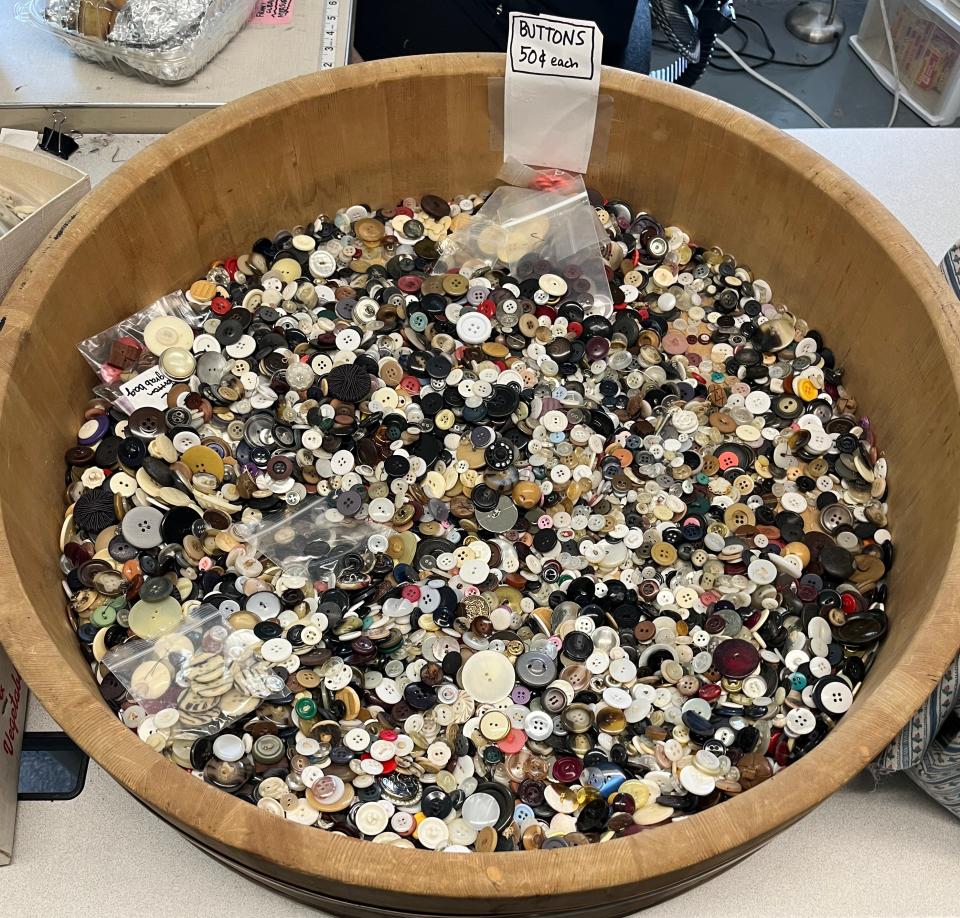
A new generation
According to the entrepreneur, kids are absolutely interested in sewing now. “My generation really feels a little skipped over but I think the interest is peaking for everyone.” She sees tremendous hope for young people generally, but the group most impassioned about sewing is Gen Z. After all, it is empowering to wear clothes cut and sewn oneself.
“I think the pandemic had a lot to do with it,” Swanson said. “They (Gen Z) took time to sit back and evaluate their lives and realized that they have not been taught a lot of skills, and they’re not happy about it.” People are returning to sewing now as a fundamental skill that has been lost for only a generation or two. “I think it feels really wrong for our humanity. And there’s some instinct to try to get it back. That we might have another generation of experts coming is heartening because we’re losing a lot of our experts.”
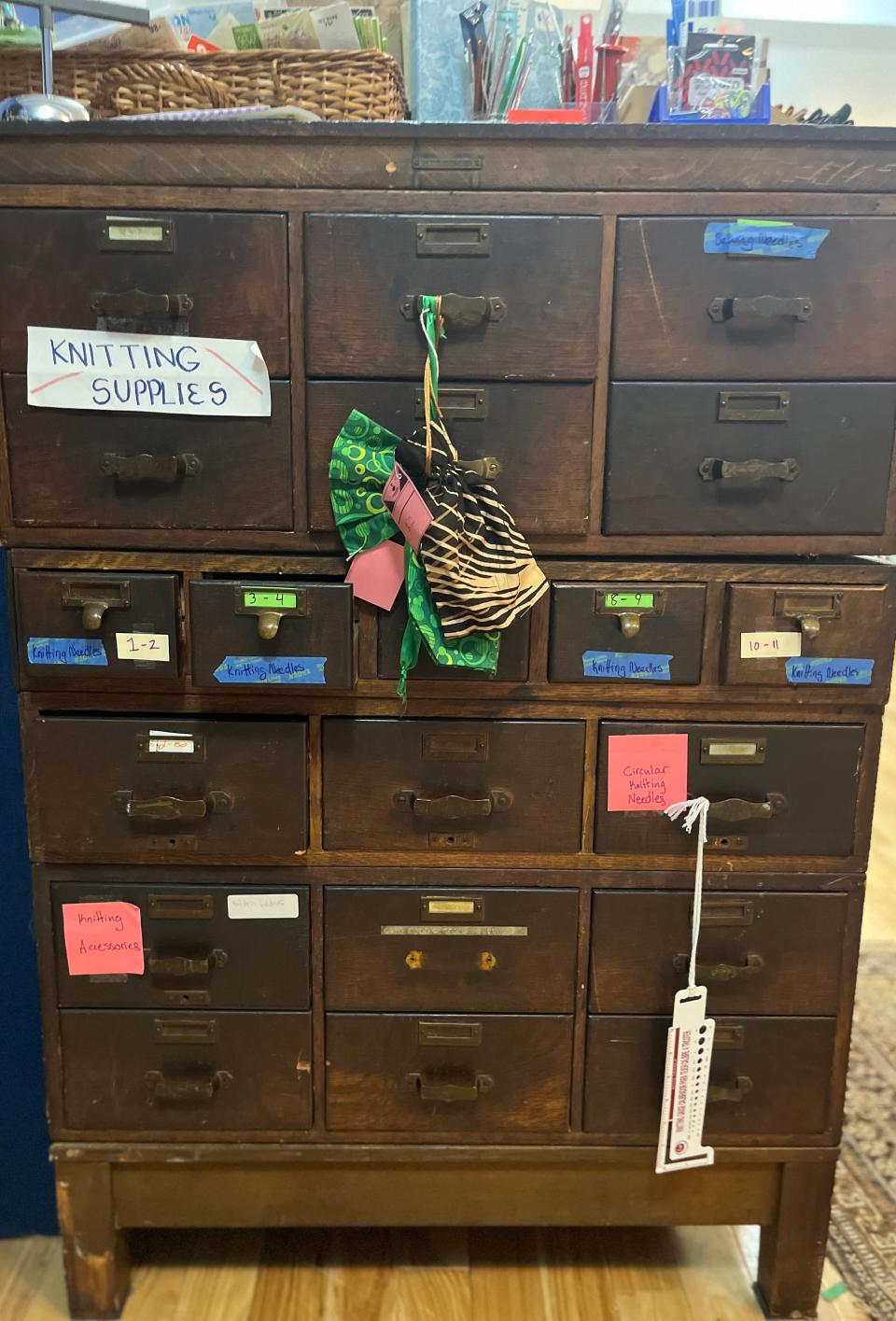
'No one ever sewed alone'
In past generations, the way most learned to sew was at home in conversation with family. To anyone who wants to learn to sew, Swanson reminds them: “No one ever sewed alone.”
The first thing a would-be sewer must do then is to find a buddy to sew with. “When you have that camaraderie and that community, it’s easier to get projects completed,” said Swanson. A generation or two ago the chain — where girls learned to sew from their mothers and grandmothers as part of growing up — was broken. But today, young aspiring sewers are not just girls; boys and girls are both sewing. Clearly, sewing is making a comeback since its disappearance in the 1970s when home ec courses were defunded, dropped from the college curriculum and then lost their cachet in middle schools and high schools, becoming a dead-end subject. In the wake of that shift, ready-to-wear, mass-produced clothing flooded the market and soon became the dressing norm.
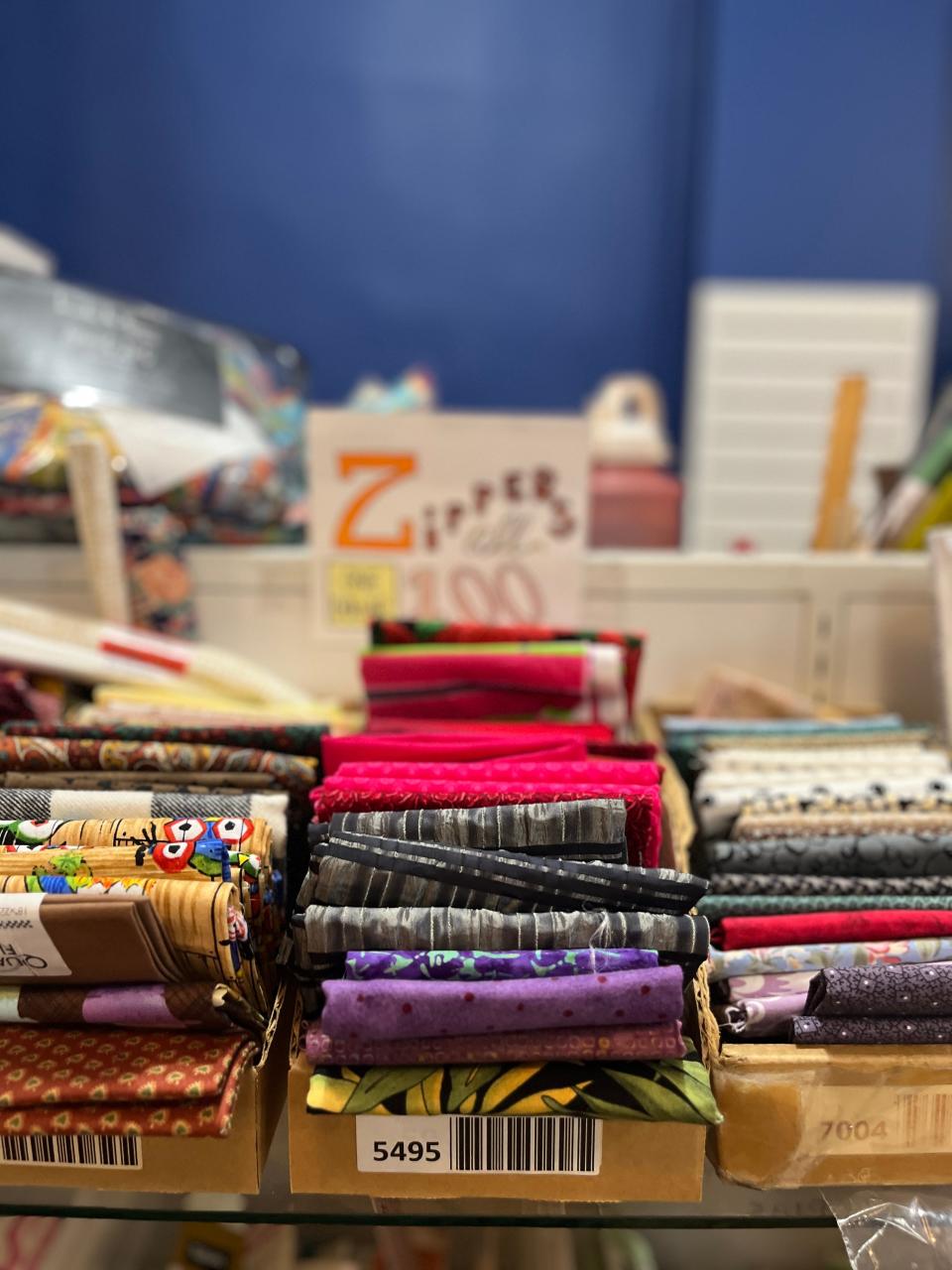
Parents sometimes seek advice from Swanson about what sewing machine to buy for their children. She advises never to buy a brand-new machine but to go instead to Facebook Marketplace or Craigslist and find an old one and have it fixed up. ”It will last their whole life,” she assures the parent. Swanson’s Fabrics also has its own sewing machine repairman — Carl — for whom the shop serves as a drop-off point rather than a middleman. In exchange, he repairs all of the machines for the store. When Swanson’s receives sewing machine donations, Carl cleans and readies them. Once sold, both parties split the proceeds.
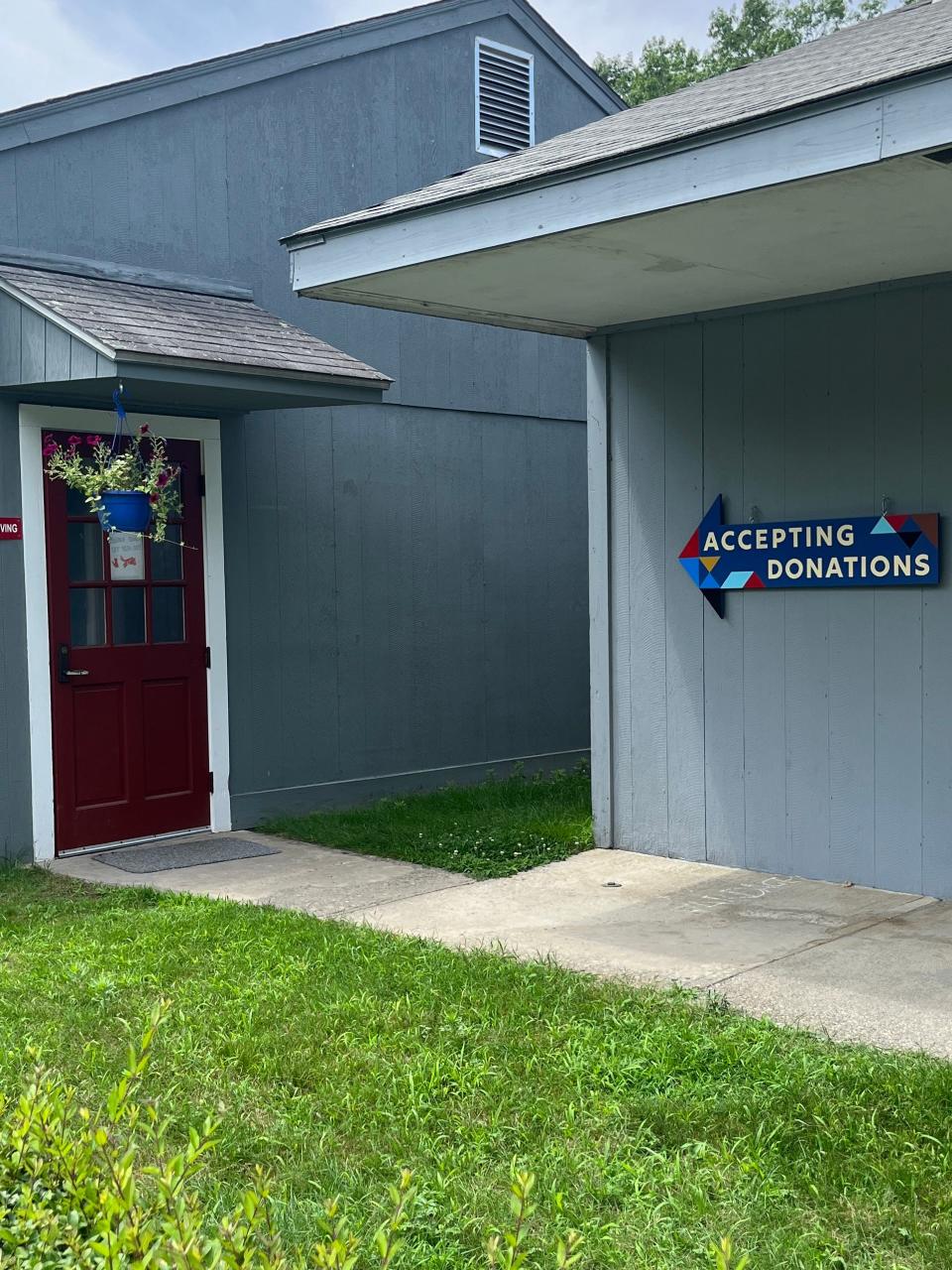
'The point is to get them to the kids'
This season for the holidays Swanson’s is planning a big sewing-machine display. “We try to sell them between $100 and $200 in order to make them as affordable as those at JoAnn’s. The point is to get them to the kids,” said Swanson because these old mechanical machines were made to last.
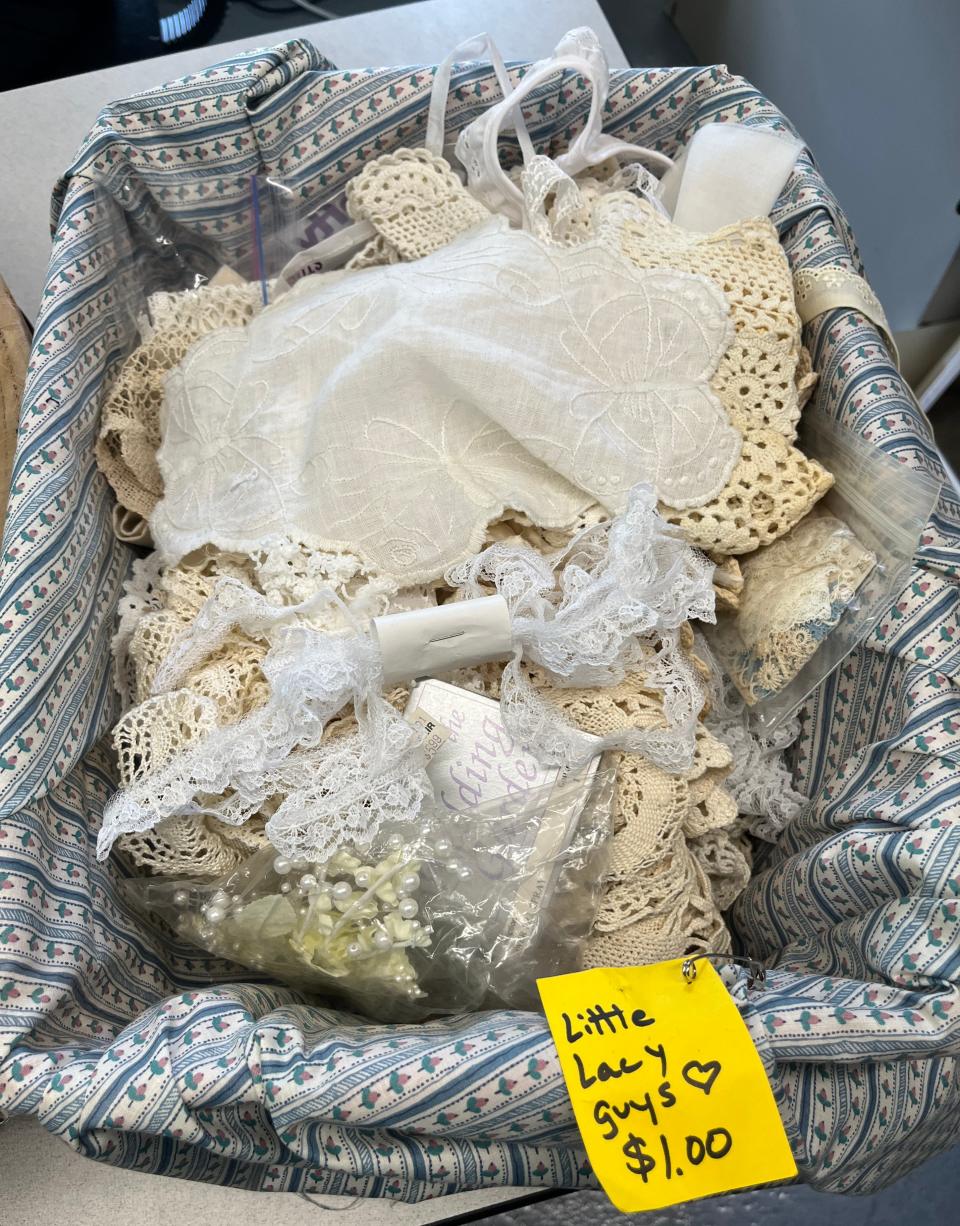
The 4,200 square-foot building that holds Swanson’s Fabrics, also known as The Stash House, is divided into several rooms with a storage warehouse. Central to its mission is a cozy lounge complete with a sidebar containing an assortment of teas to foster community and knowledge exchange. This is the hub where expert sewers and learners meet in lieu of formal classes. They have fellowship nights that are sewing groups. But a lot of educational outreach is on social media and intended to demystify sewing and encourage the novice.
Most of the business right now is through the website. With a following on TikTok, Swanson holds weekly auctions online with some of the staff picks. “I’m going to do a show of all these needlework kits that we have.” Everything in the bins has been photographed, catalogued and listed on the website. There is a membership option as well. On Wednesdays the shop hosts a private members-only store that members alone can log onto and view. They get first choice.
'Everyone is an expert in something'
“Everyone who comes in here is an expert in something,” said Swanson. Friends, family, staff, volunteers, interns and customers are all part of a new paradigm that rejects the model of buying, using and throwing away. Instead, Swanson embraces a circular economy where fabrics are used for as long as possible and then repurposed with added value. Trade is also an option at the store: work in exchange for fabric, and teachers and students can shop for free.
Staff associate Marlene Lavelle spoke of a recent intern from Smith College who spent three or four days a week for two months at Swanson’s. “They were learning about their grandmother’s sewing equipment that they had brought in. It was really cool because just being in community in this space regularly means you get to harness the information of the people around you.”
Raised outside of Washington, D.C., Swanson is the daughter of a costume designer. She attended Hampshire College and later worked as a soft-props artisan for Baltimore Center Stage, where she learned upholstery. “I also did fake food, dead bodies and blood,” she added. As a fiber artist she later worked in the yarn industry at WEBS, a huge yarn store, and then at a yarn farm, where her enthusiasm led her to frequent knitting conventions.

She thinks a business like hers should be replicated and sustained in every town since it’s a really good human instinct to collect and hold onto good textiles to pass on to the next generation.” The preservation impulse is not just about environmental impact of the textile industry but an aesthetic assessment of the stash itself: “These gorgeous textiles are never going to be mass-produced as beautifully as this ever again — the fabrics that were made in the last hundred years.”
Whether online or on site, Swanson has a clear message, “I think everyone should be looking at the waste around us and deciding what’s valuable in it. I like to say that what we put in our attics and basements is now an American natural resource that we can be tapping into.”
Swanson’s Fabrics/The Stash House
Where: 320 Avenue A, Turners Falls, MA 01376
Hours: Wed. – Sun. 11 a.m. – 4 p.m.; Sat. 9 a.m. – 5 p.m.
Contact: (413) 800-2891, www.swansonsfabrics.com
This article originally appeared on Telegram & Gazette: A sewing Renaissance: The mending of community

